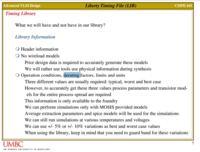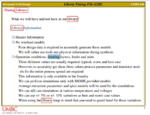pdude
Junior Member level 2

Hi,
I would like to know if there is any difference between the K-factors seen in the liberty vs the derating factors we use for AOCVM ??
I have seen it written in many places as K-factor derating but since we have the K-factors in liberty and in case of multi-voltage it is 0 but we use AOCVM files i wanted to know the difference and why we cannot use k-factors in order to do the OCV.
Thanks:thumbsup:
I would like to know if there is any difference between the K-factors seen in the liberty vs the derating factors we use for AOCVM ??
I have seen it written in many places as K-factor derating but since we have the K-factors in liberty and in case of multi-voltage it is 0 but we use AOCVM files i wanted to know the difference and why we cannot use k-factors in order to do the OCV.
Thanks:thumbsup:




